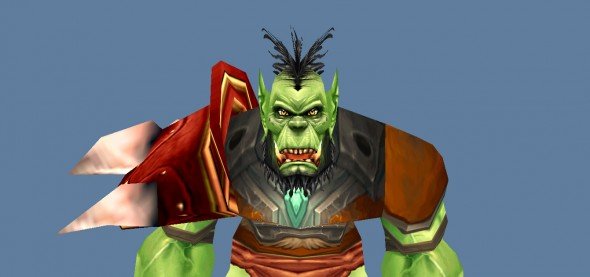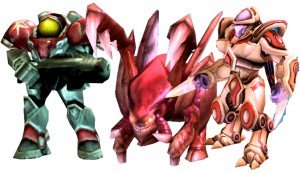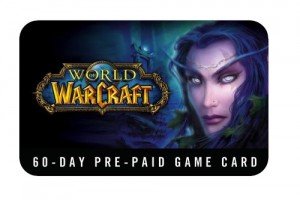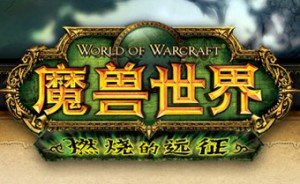
We celebrated Blizzard's 20th anniversary with a massive cover story in our April issue that analyzed just how far-reaching their impact on gamers across the globe has been. In part one of our Blizzard story, we put our collective minds together to put together a list of the many and varied ways that Blizzard has affected the "real-world" through their games. Here they are presented for your viewing pleasure: the 20 ways that Blizzard Entertainment has altered the very fabric of life.
1. PC-Exclusive Primetime Commercials

You'll find commercials for console games stuffed into just about every 30-second nook and cranny in primetime TV. After all, the audience is sitting in front of the TV for entertainment, and if you're a console game developer or publisher, these are your people.
So when Blizzard announced that it would air an advertisement for World of Warcraft: Cataclysm during a nationally televised Dallas Cowboys vs. Minnesota Vikings game, it was unprecedented. WoW has become such a staggeringly big and widly accepted entertainment product that broadcasting the opening cinematic for Cataclysm to an audience traditionally more interested in lime-flavored beer and Madden games doesn't sound crazy. In the PC gaming ecosystem, only Blizzard has the clout to pull that off.
2. The face of PC gaming

The genres and games you find in the constellation of PC gaming—from Bejeweled and Peggle to Minecraft and Train Simulator—are unmatched by any other platform. Yet it's ultimately Blizzard's games—World of Warcraft in particular—that have become the de facto face of PC gaming around the world. Not just for their undeniable popularity, but for the imprint they've left on our societies, from Time Magazine and New Yorker profile stories to StarCraft II ads plastered on the side of a Korean Air Boeing 747.
3. Internet cafes

It's not email and FarmVille that's driving the popularity of internet cafes around the world, and throughout Asia and South America in particular. Instead, you'll most likely find customers paying by the hour to play StarCraft, StarCraft II and WoW. If you've any doubt about the impact of these joints, consider that internet cafes employ over a million people in China alone.
4. Disease control

Long before The Shattering, 2005 saw a cataclysm of its own with WoW patch 1.7.0. When adventurers surfaced from Zul'Gurub, it wasn't just fresh gear they were toting. A bug allowed hunter pets to carry the Corrupted Blood plague they had contracted from Hakkar the Soulflayer out into the main world, turning Ironforge into a boneyard. As the plague made corpses of those coming in proximity to the infected, disease researchers seized an opportunity to study the spread of a virus among millions of independently thinking individuals. Their findings have proven useful to scientists who research pandemics—not to mention overall zombie apocalypse preparedness.
5. Three-way asymmetric RTS design

Before StarCraft, most factions in RTS games played alike. They had different units and abilities, but they all gathered resources, constructed buildings and did war in similar ways. In 1998, StarCraft introduced a system where the three races operate with unique game mechanics. Protoss Probes summon structures into existence and walk away; Zerg Drones sacrifice themselves to mutate into a facility. Blizzard's execution of these bits of balance aren't insignificant—they fundamentally distinguish SC's races, and they're the foundation of the sports team-like fanaticism and intense, emotional connection players feel for their favorite faction.
The biggest gaming news, reviews and hardware deals
Keep up to date with the most important stories and the best deals, as picked by the PC Gamer team.
6. Nerdification

Following North Korea's artillery bombardment of the South in 2010, the South Korean Defense Minister told the public “the actual situation is not StarCraft” to explain why the real-world response was slightly slower than a Zerg rush. Blizzard games have so penetrated the cultural spheres external to gaming, the acronym WoW has been heard on the sidelines of soccer games, China's banishment of gold farming warranted CNN and Fox News stories and “FTW,” “mobs,” and “fail” have bled from the forums onto the front page. It's a fact: the language of Blizzard has coalesced with the language of life. GG.
7. The subscription model

By the time World of Warcraft was launched in 2004, there had been a few MMORPGs that helped make gamers more comfortable with monthly subscription fees. But it was WoW's breakaway success that brought the subscription model well into the mainstream—making it easier for other virtual worlds to do the same while simultaneously neutralizing the problem of piracy. WoW's success was no doubt also taken into account when services including Netflix and Xbox Live considered their own subscriptions models. It's a system that continues to work well for Blizzard—even in the face of the burgeoning market of free-to-play games.
8. Laws

New digital economies beget new laws to regulate them. According to InformationWeek.com, the Chinese government recently passed a law prohibiting the use of in-game money or items to purchase real goods and services—perhaps out of concern that in-game money could supplant official currency and undermine economic stability. There's a long way to go before that's a possibility, but you can't blame China for being prepared.
9. Guild meetups

Would you ever travel to meet a stranger you met on the internet? It isn't necessarily the best of ideas—but WoW's powerful social elements have spawned friendships strong enough to cross over into the real world. Its players have been known to traverse continents to come together for increasingly popular guild meetups, and there are even cases of romance being forged in the fires of WoW—where else can you find a gnome who fell in love with a goblin?
10. Professional PC gameplay

Apart from the occasional pinball wizard or world's record holder for the high score in Donkey Kong, the concept of the professional gamer began to coalesce in the late 1990s around fledgling leagues and increasingly popular tournaments of games such as Quake III and Counter-Strike. But it was StarCraft's uniquely balanced RTS gameplay, combined with Battle.net's ladder ranking system, that gave professional competitive PC gameplay the foundation it needed for a boom. Not only that, but it spawned an entire side-community of commentators on whom spectators rely to provide insight to the professional games.
PC Gamer is the global authority on PC games—starting in 1993 with the magazine, and then in 2010 with this website you're currently reading. We have writers across the US, Canada, UK and Australia, who you can read about here.


